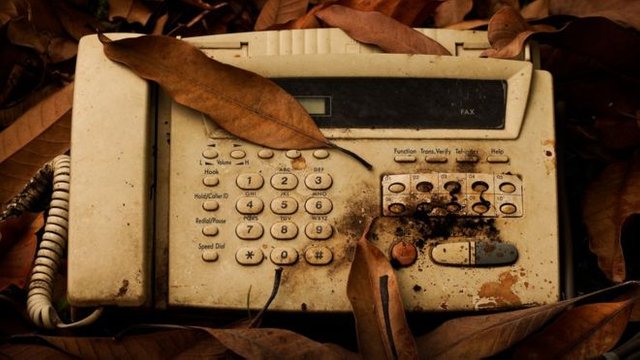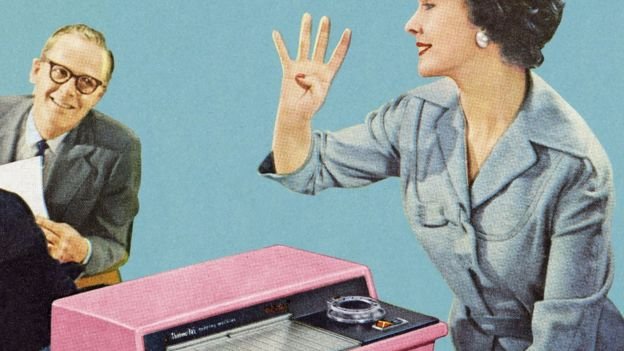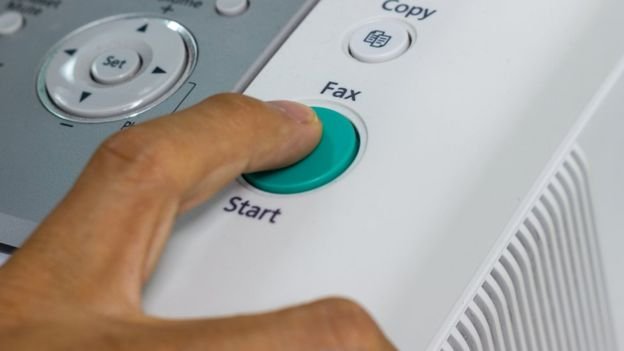Why are there companies and governments that still use faxes

If you think of a modern and sophisticated technology, probably the unpleasant beep of a fax is not the first thing that comes to mind.
Facsimiles or telecopies-yes, that's their original name-predate the digital era. The machines that allow to send them are more than 170 years old, so many consider them obsolete technology.
However, several companies and governments around the world are reluctant to abandon the fax, which for a long time and from the 1980s was indispensable in any office worth its salt.
"In many cases, sending a fax is safer, easier to use, and more suited to current work habits than sending a message through the computer," Jonathan Coopersmith, a professor of history at The Conversation, wrote in a column for The Conversation newspaper. technology at the University of Texas, United States, and author of the book The Rise and Fall of the Fax Machine ("The rise and fall of the fax machine", 2016).
But faxes are not always the safest option. In fact, there have been recent alerts that suggest that those machines are in the crosshairs of hackers.
Even so, in countries like Japan and Germany, as well as in several sectors of the United States -including the FBI-, sending a fax is as usual as an email. Even the Japanese technology Sony sends faxes.

A 2017 global survey found that out of 200 large companies - companies with more than 500 employees - 82% saw their workers send the same number of faxes or even more than in 2016.
One of the reasons that explains the persistence of the fax is that the industry has been able to adapt to digital technologies. For example, some servers allow you to send electronic documents. It is the so-called "eFax" or electronic fax.
In addition, there are cloud services that treat documents sent by fax as PDF files. These systems allow their sending both through telephone lines and over the internet, according to the receiver.
Paul Rydell, the founder of FaxBurner, a company that can convert faxes into emails (and receive them through an application) points out in his blog that one of the reasons why the fax is still used is that "it is one of the ways easier to send a document ", in addition to its" versatility ".
"Digital conservatism"
The British company of technological advice Cooperative Systems considers that another of the reasons for which the fax prevails is the "digital conservatism".
"Despite what we know about the ability of technology to improve operability and boost productivity, many companies do not dare to change," he explains on his website.
He also points out that two of the reasons that fuel this conservative approach are the idea that technology will replace humans and the threat that "the internet is not safe".

Coopersmith calls that attitude "the inertia of the comfortable."
"A personal factor that makes the fax continue is the reluctance to change," Small companies that feel that the fax meets all their needs have little reason to spend money to try to try a new technology to exchange documents, "he says.
It is estimated that there are more than 45 million active fax machines worldwide.
At the hospital
Sectors such as health, the legal field, police forces, and some governments use faxes on a regular basis.
"Certain companies and organizations prefer to send some sensitive documents, such as contracts and correspondence, by fax," says Rydell.
One reason behind this, in addition to resistance to change, is the fear of the lack of security in the digital world.
Doctors use faxes a lot in both routines and high-risk situations. According to the US news site Vox, it is considered that currently around 75% of communications in the medical world (within that country) are made by fax.
In the United States, that usually happens because a certain regulation - the Health Insurance Transfer and Accountability Act, known by its acronym in English, HIPAA - requires doctors to protect certain patient information by faxing documents, instead of use the email
And in the UK, the British health system, NHS, also continues to use it. In December, the agency received an ultimatum to stop using those machines completely by 2020.
It is an old custom. Moreover, as reported by the American magazine The Atlantic, a startup called PatientBank that allowed users to receive their medical records digitally, had to close last year because it was too difficult to access those faxes.
Paul Fletcher-Hill, founder of the company, told the newspaper that one of the reasons that hospitals claim to continue depending on the fax is security. "There is a perception that digital systems are easier to hack," he says.
In part it is true, because although the signal is detected -which is very possible- compromising that single signal is much less harmful than a whole system of digital data. So even though it may be more vulnerable on an individual level it would not compromise data sets like a computer does.
A fax for the FBI
In the case of law enforcement, many of the data remain analog.

For years, in the field of journalism it is known that the FBI only admits requests related to the Freedom of Information Act (abbreviated FOIA) by ordinary mail and fax.
However, many wonder if it is not time to renew. The email would allow doctors to receive the history instantly and more easily, and the FBI could respond more directly to requests.
But do not forget what Coopersmith describes as "the magic" of seeing a document instantly transmitted to another part of the world. Accustomed to the abstract of the digital universe, the tangible acquires a special attraction and allows us to have the information, literally, in our hands.
5 data about the fax
-The first machine to send "facsimiles" was invented in 1842 by the Scot Alexander Bain.
-The first version of the invention worked by scanning a message written with a special ink on a mental surface.
-At the beginning of the 20th century, fax machines were used by organizations such as newspapers.
-After technological improvements made by Japanese firms, its use was extended in the 1970s and 1980s.
-They reached their apogee at the end of the 20th century and were later replaced by more modern methods of communication.